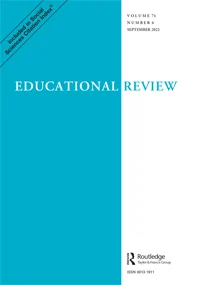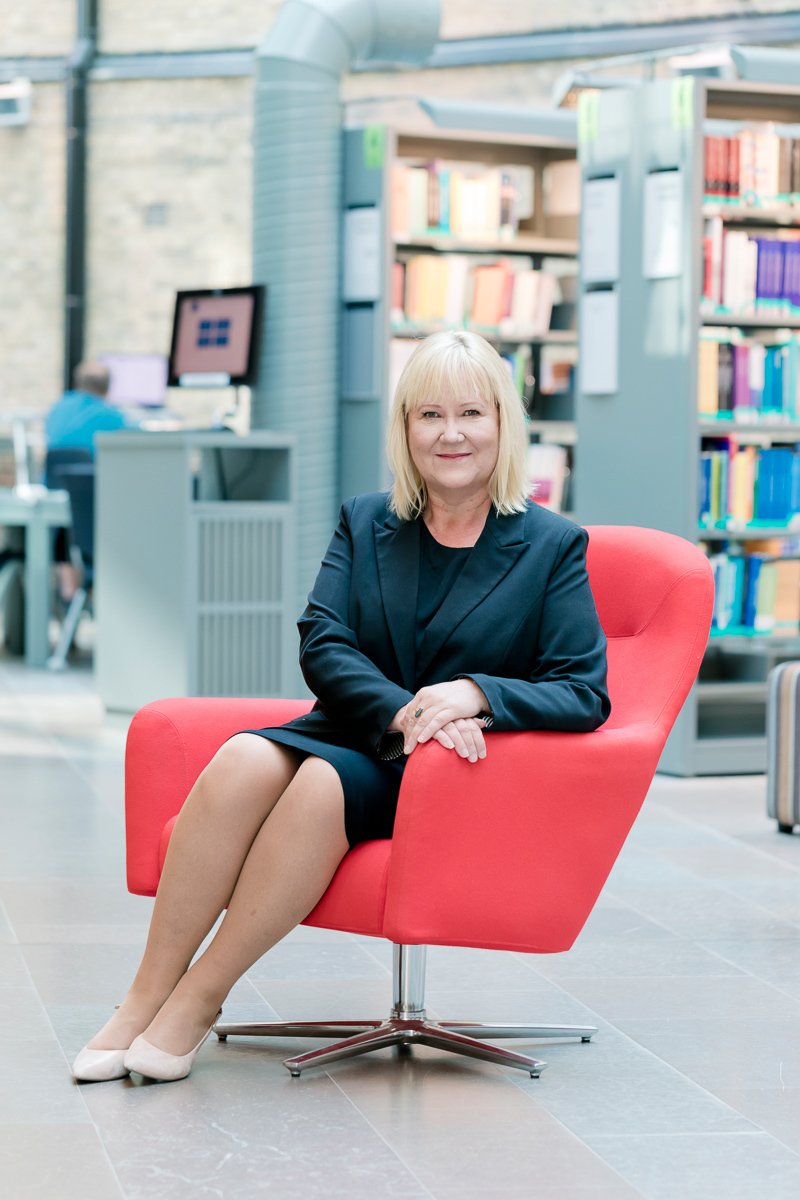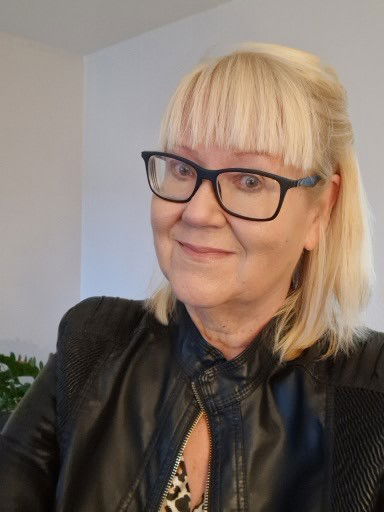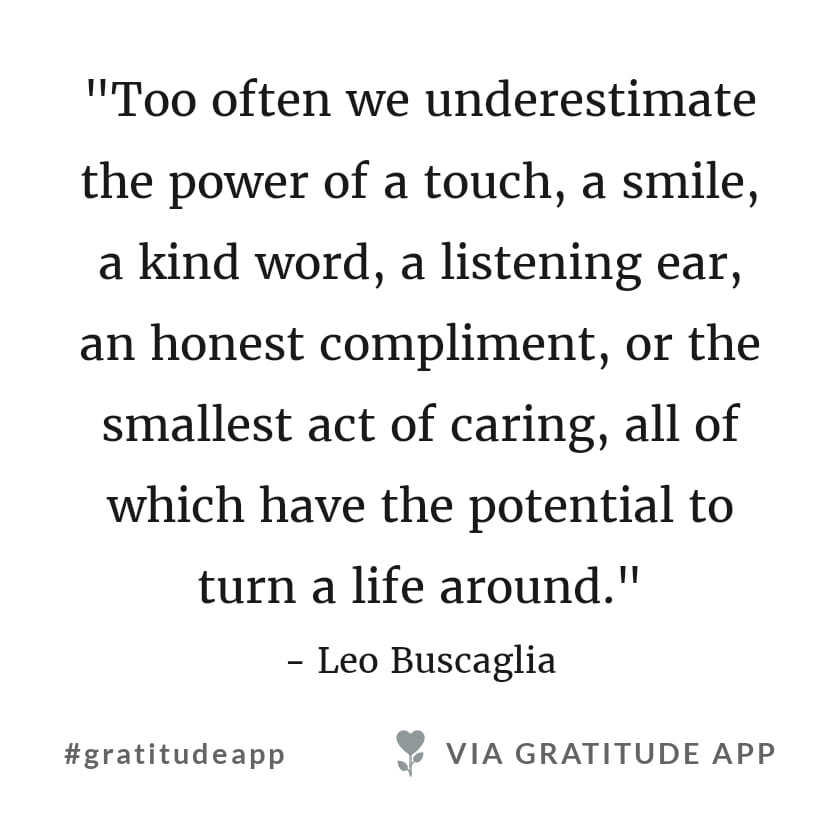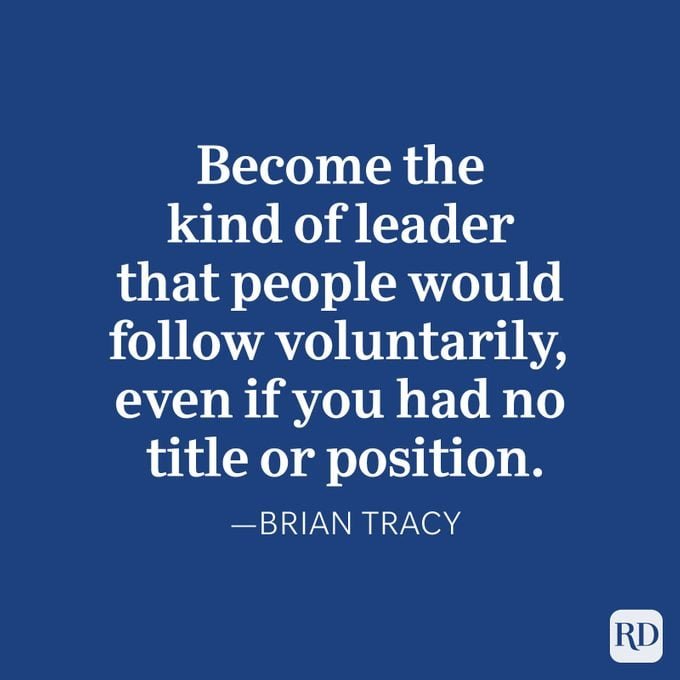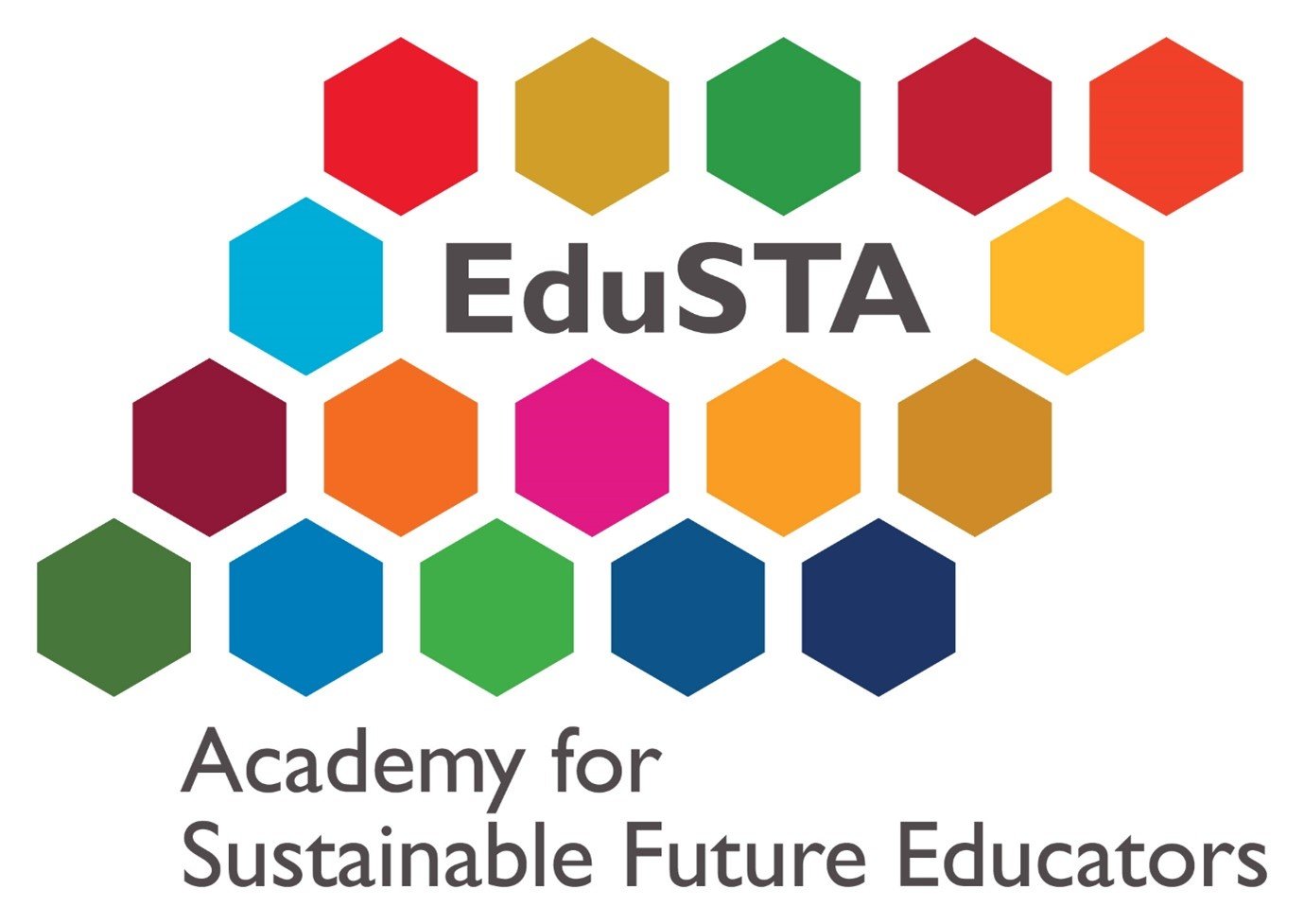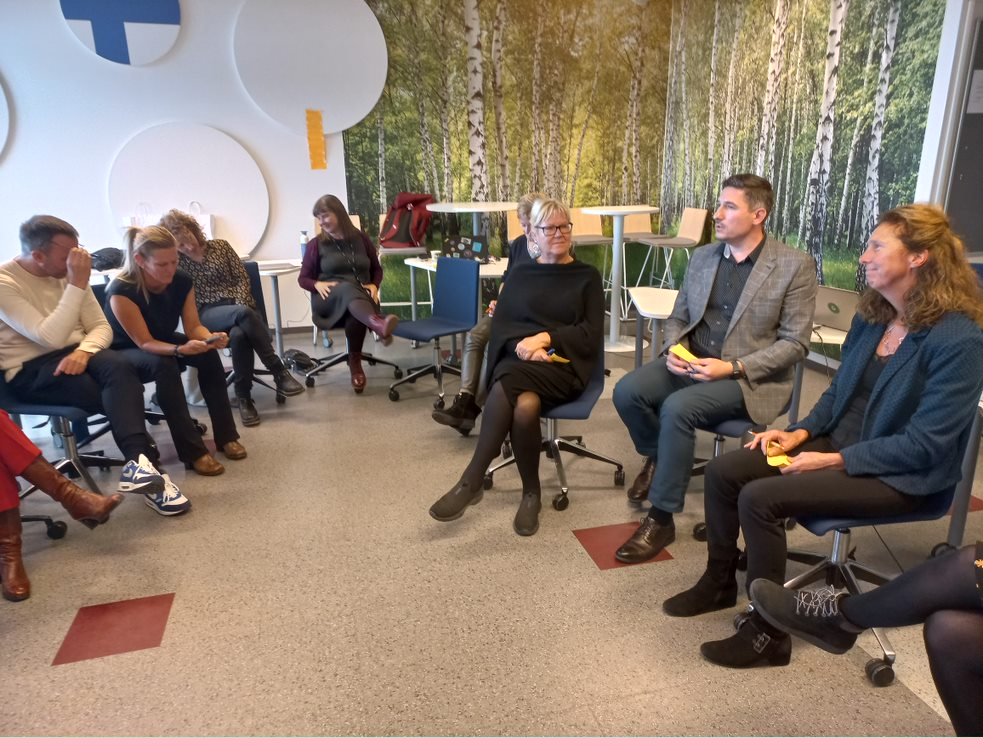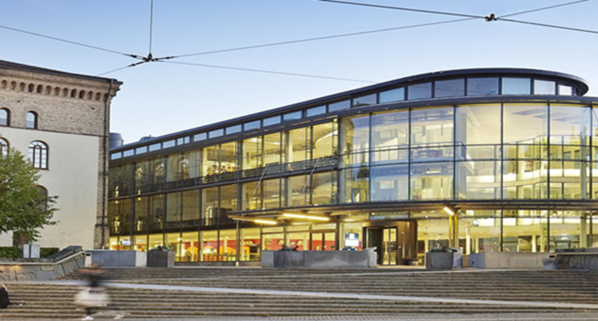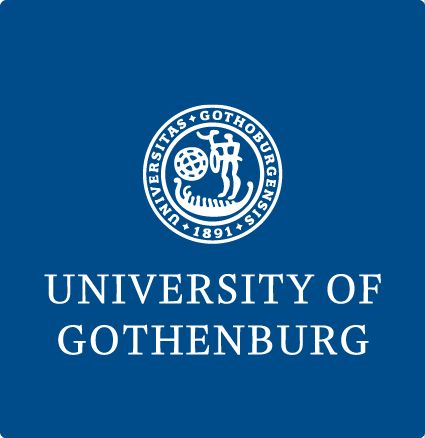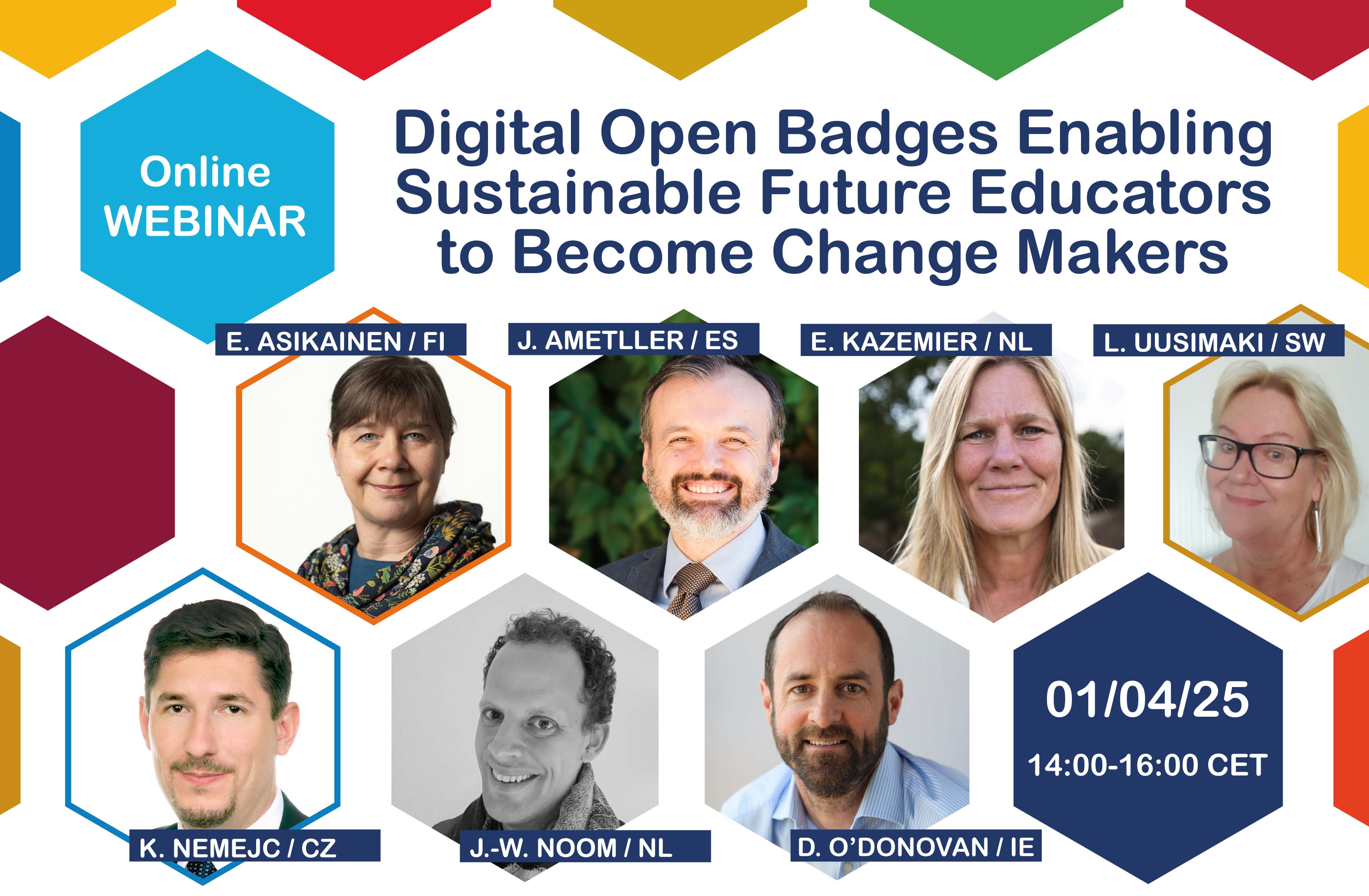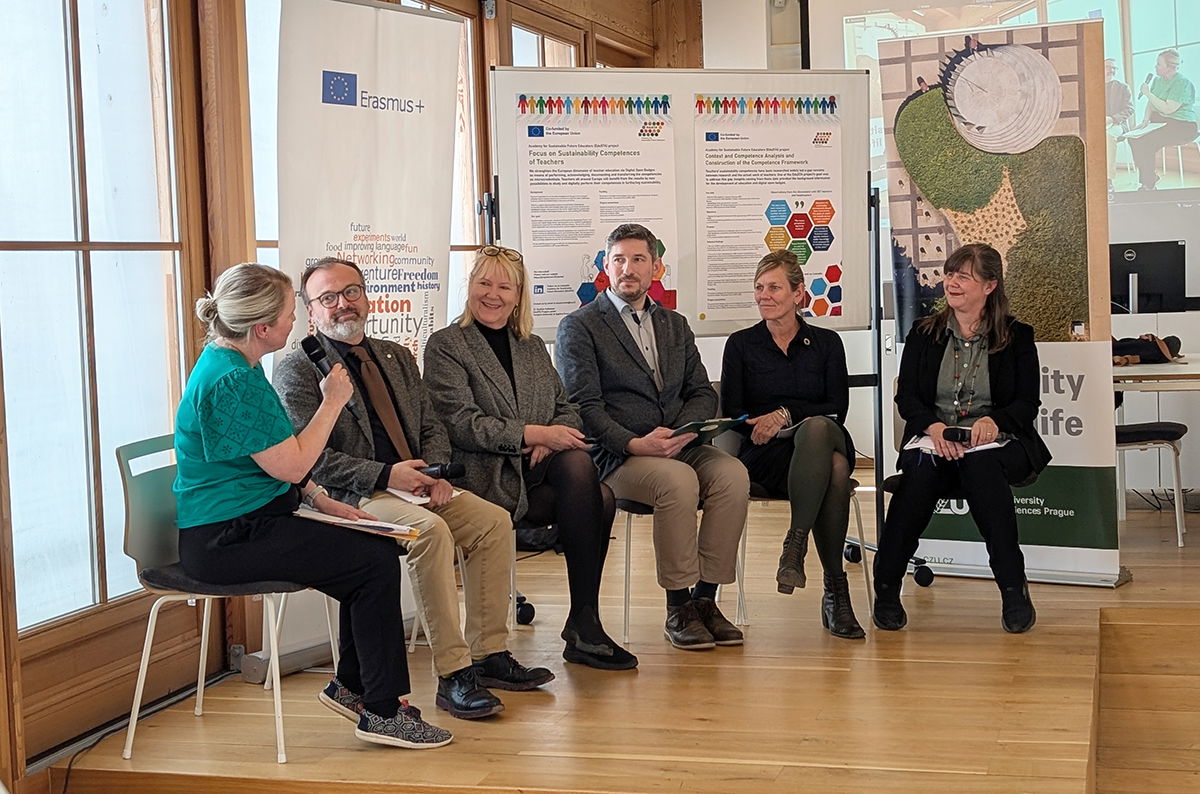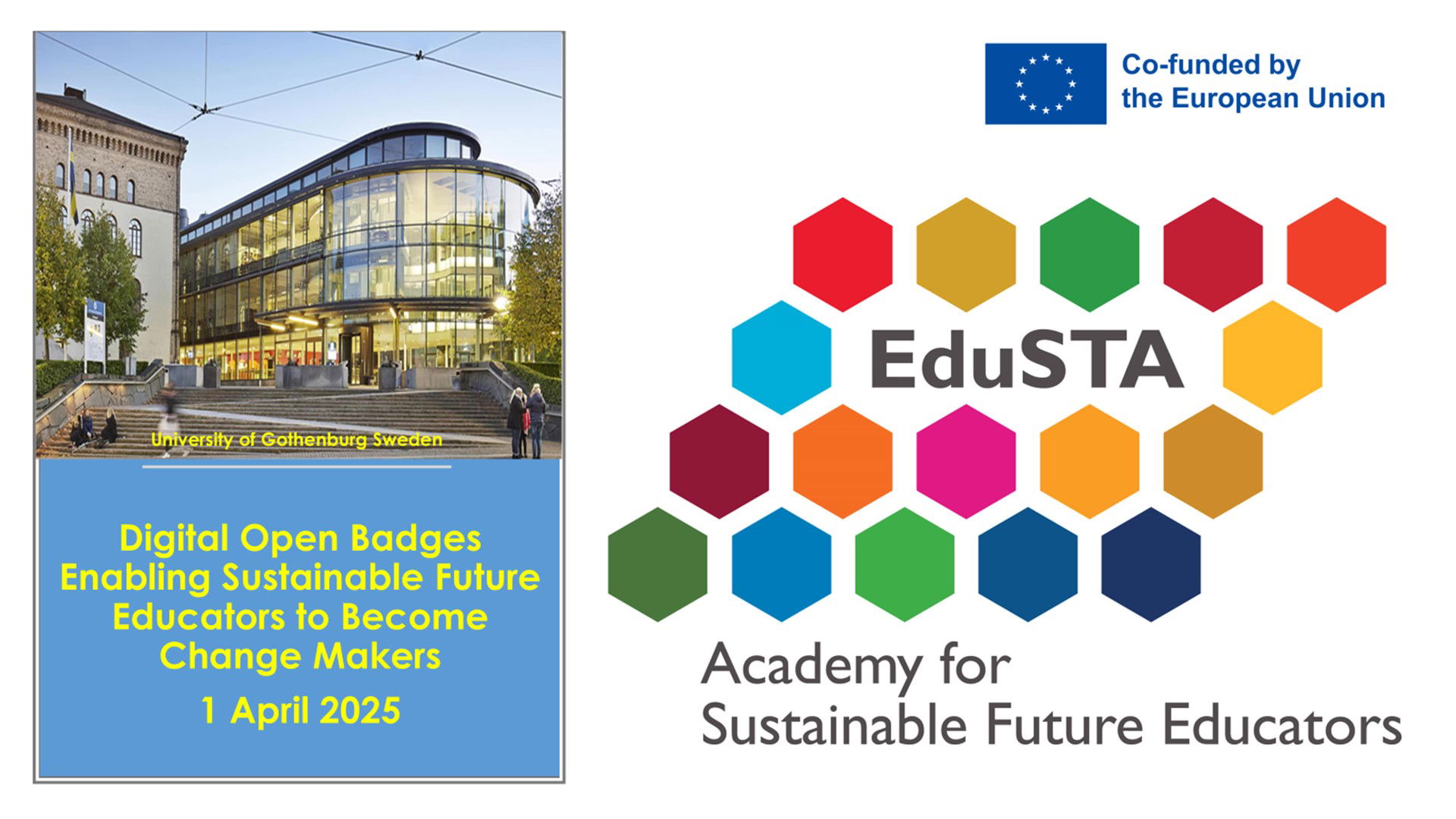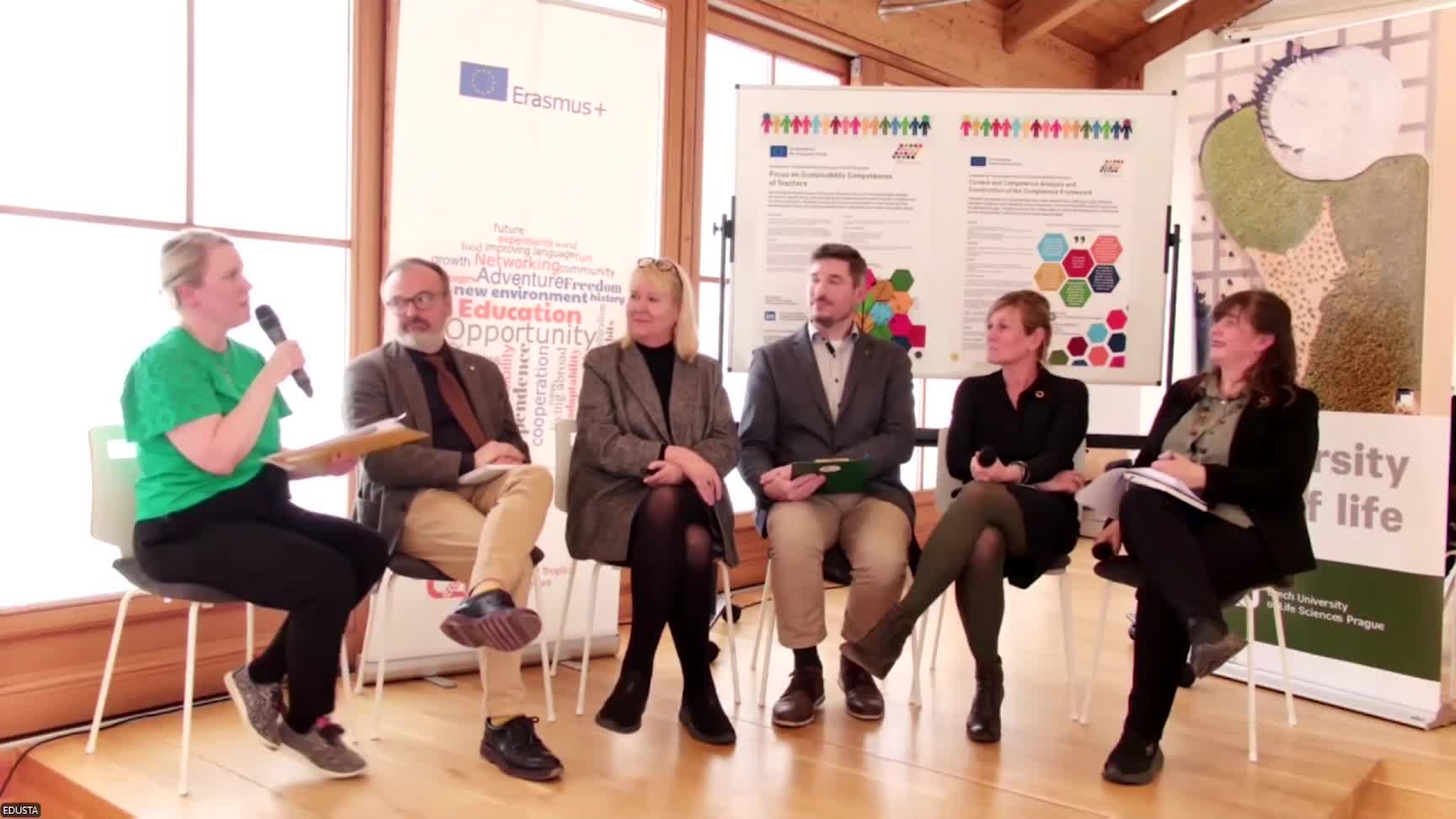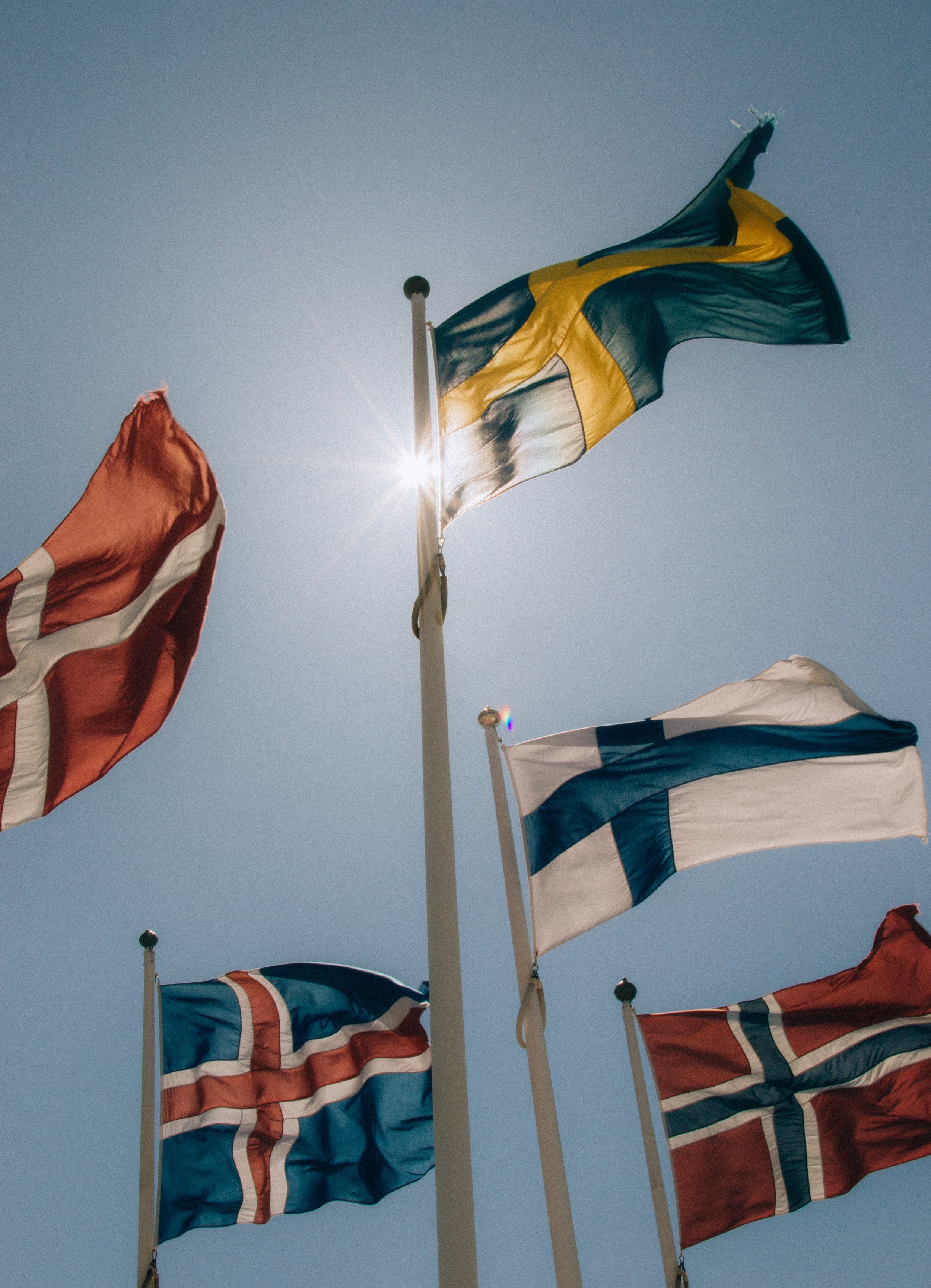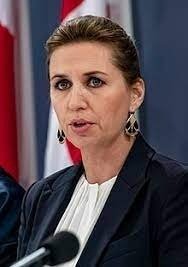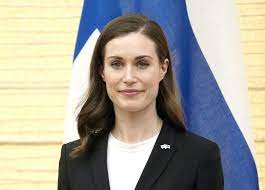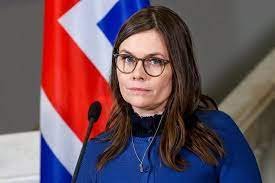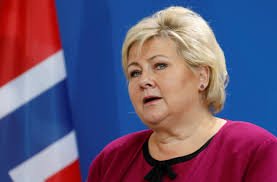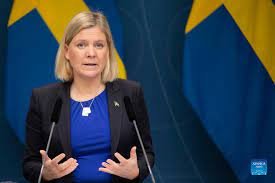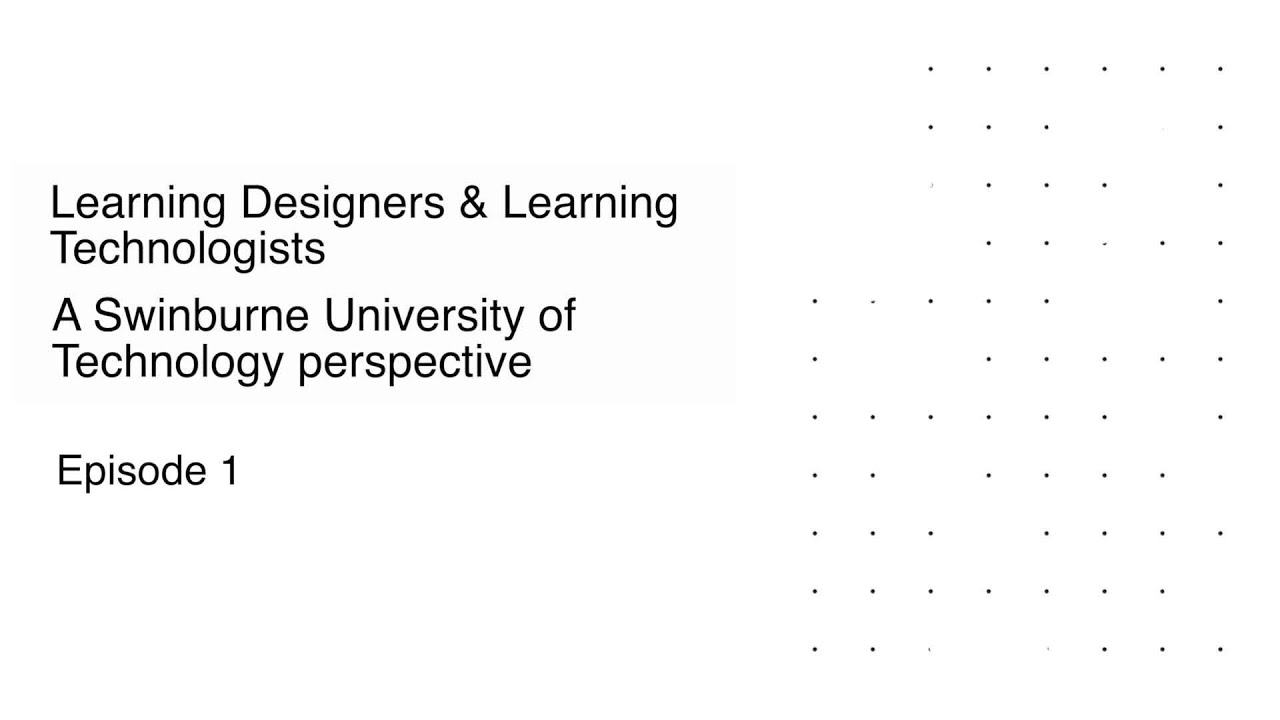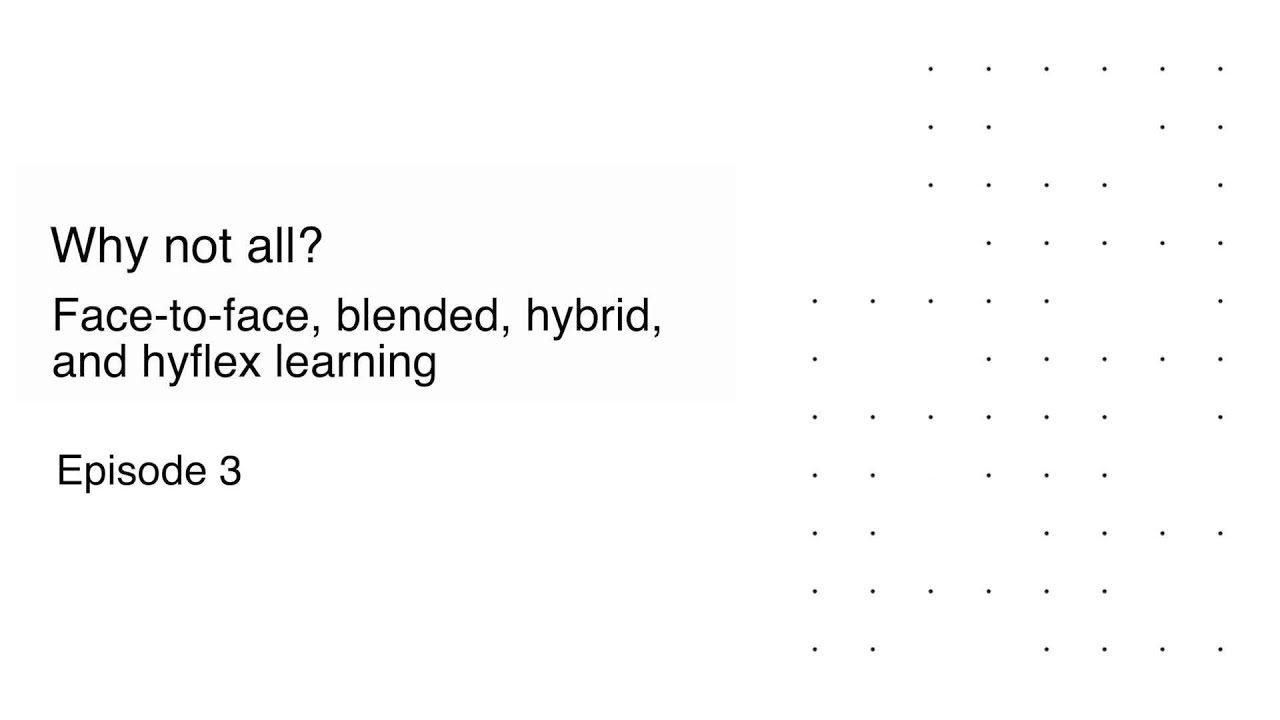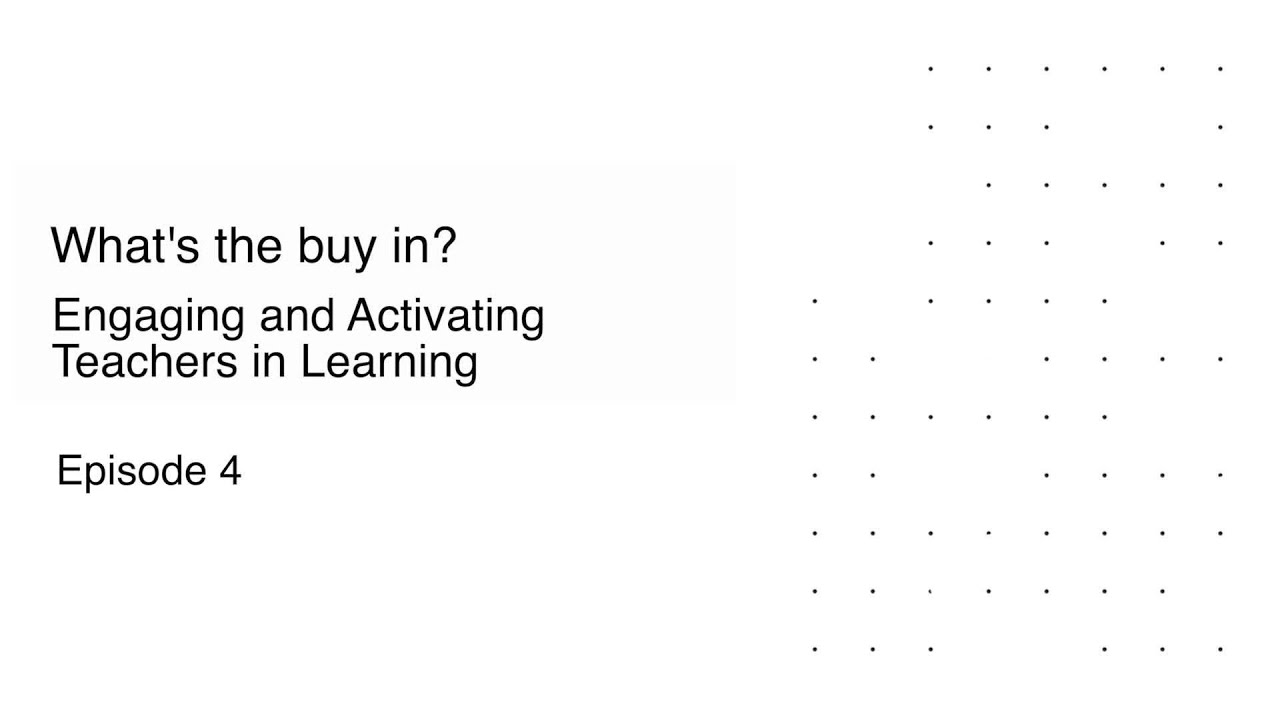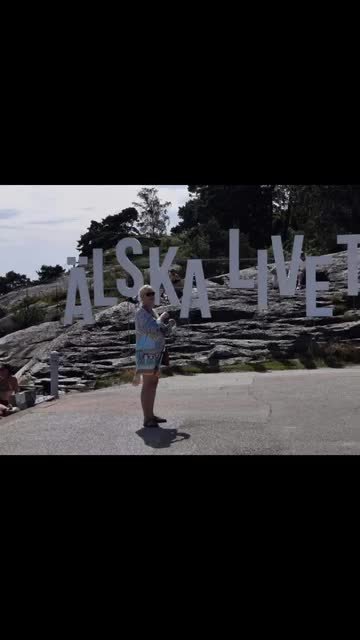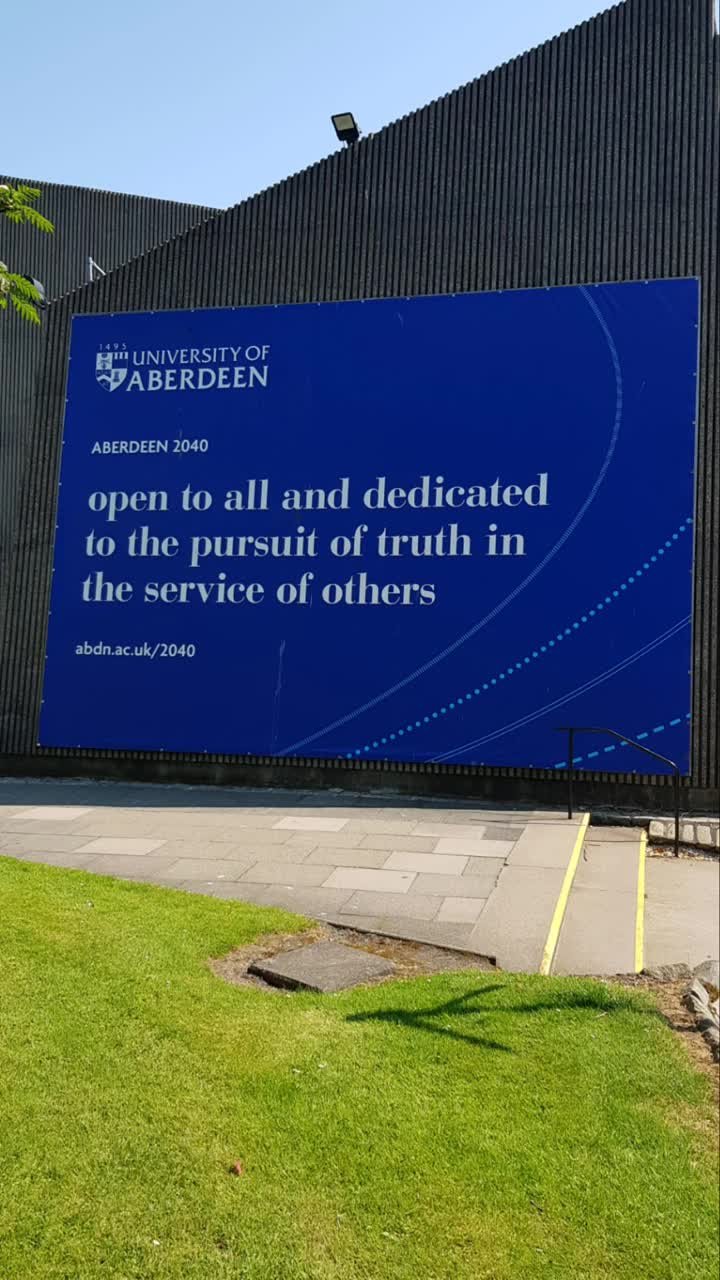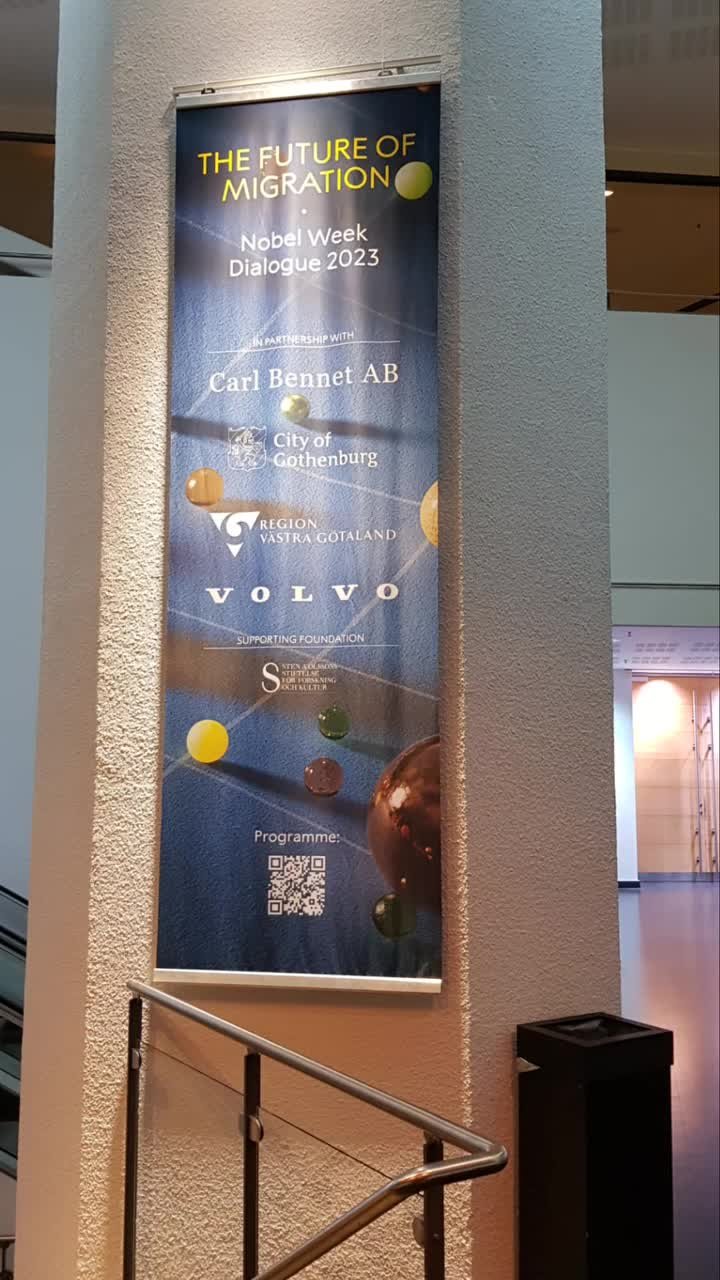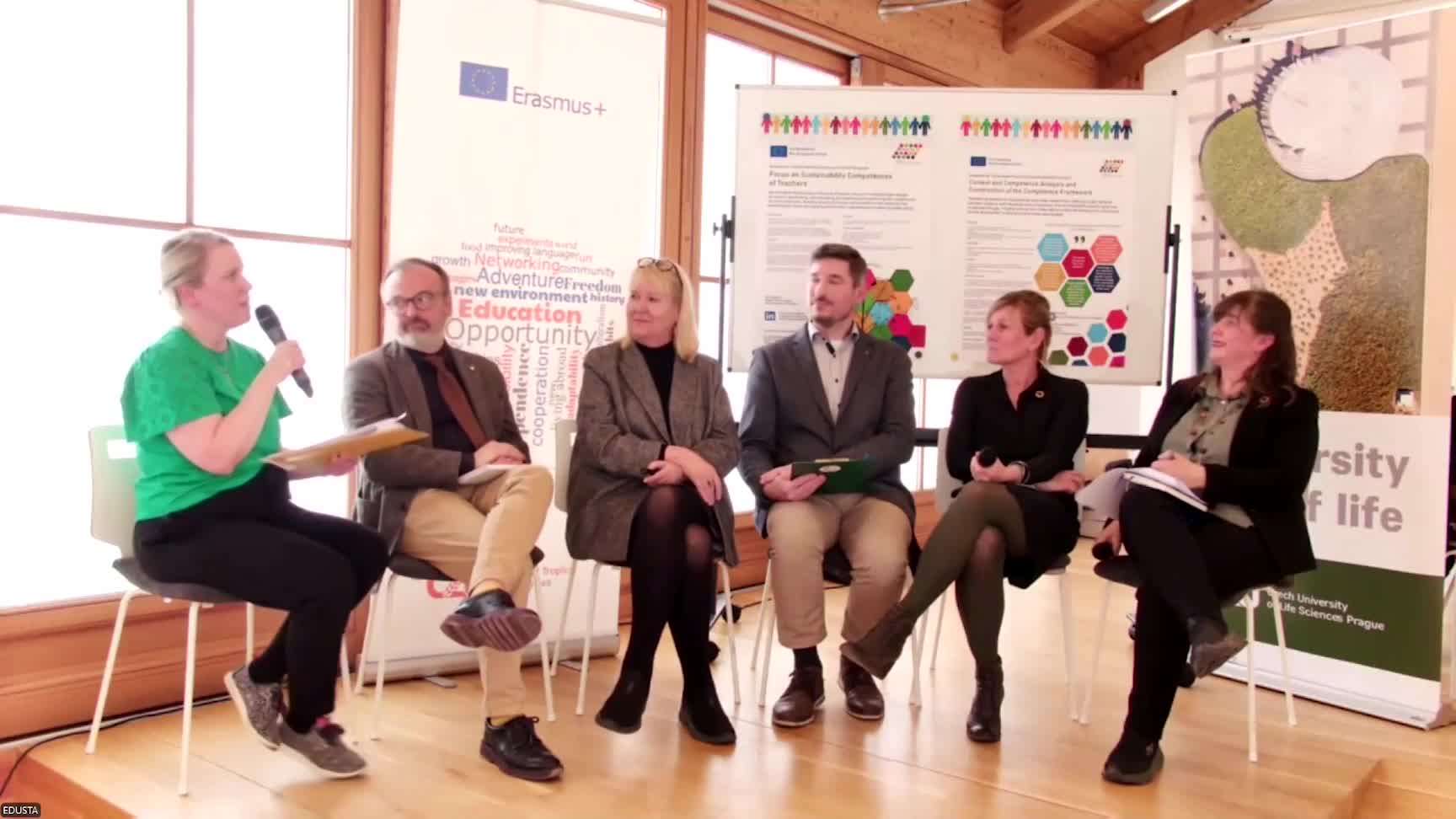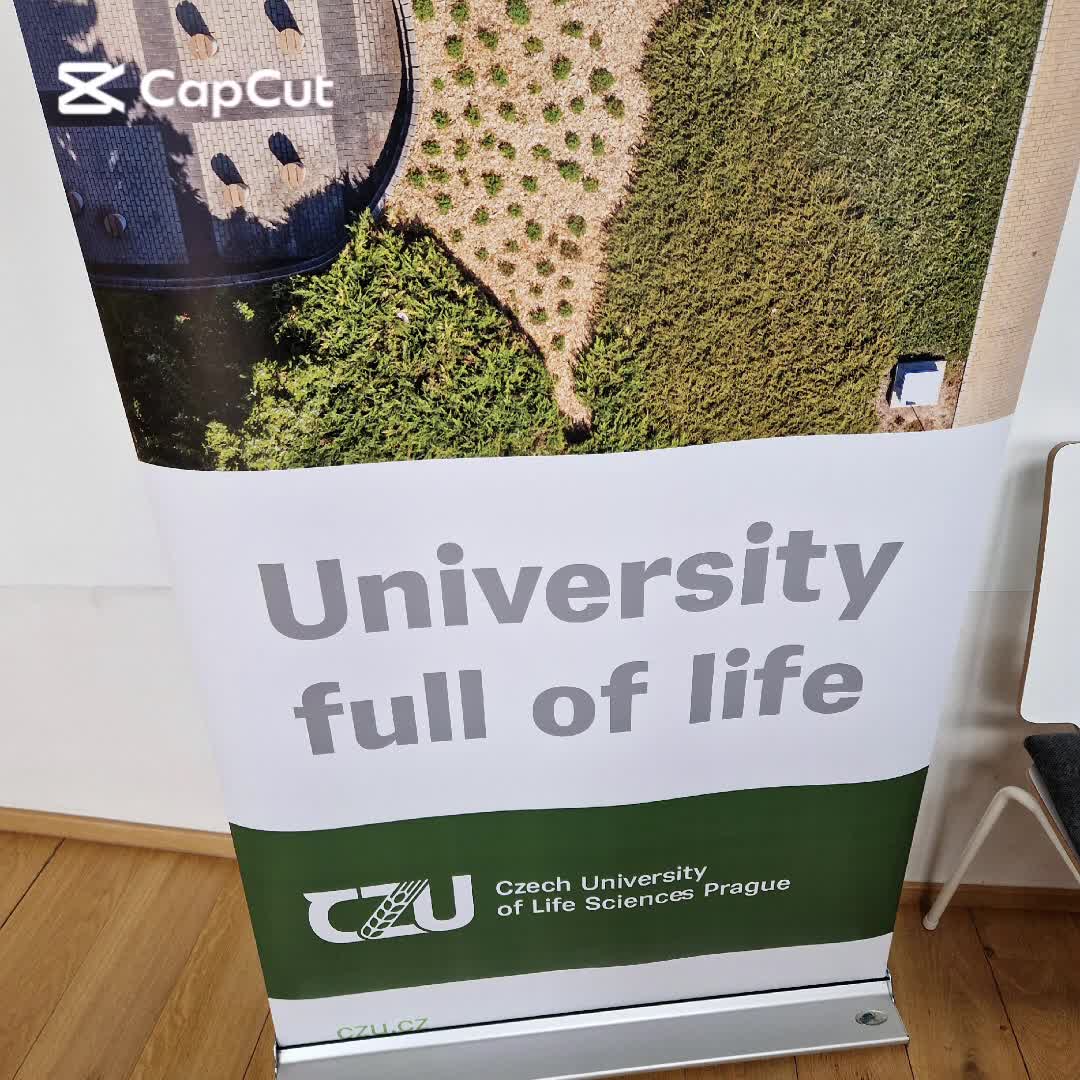Project EduSTA focuses on re- and upskilling VET teachers and Teacher Educators and building a community: “Academy of Educators for Sustainable Future”.
I am so excited to be representing the University of Gothenburg as Project Manager for an International Project titled Educators for a Sustainable Future or EduSTA.
The project brings together five teacher education institutions around Europe (Finland, the Netherlands, Spain, Sweden, and the Czech Republic) to develop a close network with a strong commitment to educating teachers who are willing, able, and competent to transform educational practices and policy to meet the sustainability challenges and ready to combine innovative approaches to use digitalization in teaching and learning.
Teachers’ capabilities to act as active change-makers in the ecological transition and to educate citizens and the workforce to meet future challenges is key to a profound transformation in the green transition. Teachers’ sustainability competencies have been researched widely but a gap remains between research and the actual work of teachers. There is a need to operationalize sustainability competencies: to describe the direct links with everyday tasks such as curriculum development, pedagogical design, and assessment. Thus, the aim of the project is to respond to the urgent need for a sustainably competent workforce focusing on re-and upskilling VET teachers. Together with our colleagues from Higher Education Institutions in Finland, Holland, Spain, and the Czech Republic, the purpose is to collaboratively create open digital badge-driven learning pathways on teachers’ sustainability competencies supported with multimodal learning modules.
The Institutions involved in the project are,
- Tampere University of Applied Sciences (TAMK), Finland,
- Hanzehogeschool Groningen (Hanze), Holland,
- University of Girona (UdG), Spain
- The Czech University of Life Sciences Prague (CZU), Czechoslovakia
- Department of Education and Special Education, Faculty of Education, Göteborgs Universitet, Sverige (below pic)
The below is a book free to download and developed for Work package 3 for the EduSTA Project.
To access the EduSTA Swedish website copy and paste following link to your url, https://www.gu.se/pedagogik-specialpedagogik/academy-for-sustainable-future-educators-edusta-project
EduSTA Meet, Groningen, The Netherlands, Nov 2023
Example Text
ATEE and EduSTA webinar 3 Sept at 15.30 CET
Hi TG-EduSTA team! The program for our September webinar is now ready. You can find the event news (and the registration link) both at our website and in LinkedIn. Please spread the word, thanks! Welcome to join us in EduSTA and ATEE Webinar 3 September 2024 at 15.30–17.30 CET | Academy for Sustainable Future Educators (EduSTA) | Tampere Universities (tuni.fi)
Final EduSTA seminar in Prague: Digital Open Badges Enabling Sustainable Future Educators to Become Change Makers 31 MARCH - 4 APRIL 2025
The final meet included representatives from the European Commission and the partners from the 5 countries Higher Education Institutions. The Institute of Education and Communication Prague, Czech Republic, Tampere University of Applied Sciences, Finland, University of Gothenburg, Sweden, the Catalan University of Girona, Spain and Hanze Groningen, Netherlands as well as AERES Wageningen.
A key highlight of the event was the international webinar held on 1 April, focusing on "Digital Open Badges: Enabling Sustainable Future Educators to Become Change Makers." The webinar centered on sharing experiences from pilot initiatives across partner countries, with an emphasis on teacher development for sustainability.
In the afternoon session, panelists reflected on the project’s key learnings, challenges encountered, and the most significant outcomes. They also offered valuable insights into how these results can be implemented within each participating Higher Education Institution moving forward.
Throughout the discussions, short videos showcasing the Czech, Catalan, and Swedish pilot projects in initial teacher education were shared with webinar participants. In addition, videos from Hanze and TAMK highlighted pilots conducted within professional development programmes.
The project’s external evaluators, Dermot O’Donovan and Jan-Willem Noom, contributed their reflections as critical friends, offering independent perspectives on the project’s progress and impact.
The webinar community—comprising 136 participants including teachers, researchers, policymakers, and project managers from both EU and non-EU countries—also received messages from several distinguished guests. These included Policy Officer Cécile Le Clercq, responsible for Erasmus Teacher Academies at the European Commission’s Directorate-General for Education, Youth, Sport and Culture (DG EAC); Monika Hoang, Policy and Project Manager at the European Federation of Education Employers (EFEE); Mariagrazia Tagliabue, Head of Office at the project’s associate partner, the Association for Teacher Education in Europe (ATEE); and Sophia Queckenberg, Policy Assistant from the Green Education Team within the Schools and Multilingualism Unit at DG EAC, who delivered the closing remarks.
THE SWEDISH WEBINAR PRESENTATION
TACK / THANK YOU
WE FROM THE SWEDISH TEAM WISH EACH OF OUR PARTNERS THE VERY BEST
PÅ ÅTERSEENDE / WE WILL MEET AGAIN
Liisa Uusimaki (Project Lead)❤
Swedish Partner Experience Reflections 2025 - Sustainable Education For ALL
Liisa Uusimaki & Monica Reichenberg University of Gothenburg, Sweden
University of Gothenburg, Sweden & Vocational Education & Training (VET)
University of Gothenburg (2023) is internationally recognized for its work on sustainability in education and research that is a crucial aspect of the university's mission. To ensure courses and programs educate for sustainability the university has a system for labelling courses and programs since 2006 as sustainable. (Uusimaki, 2025)
The labelling of courses is based on criteria reflecting the multidimensional concept of sustainable development. Today 20% of courses and 25% of programs are labelled sustainable, and the goal is to further develop and strengthen sustainability efforts while increasing the university’s relevance as a societal actor and collaborative partner, thereby contributing to Agenda 2030 and the global goals for sustainable development, encompassing economic, social, and ecological dimensions (Uusimaki, 2025).
Selecting the course Development Work and Action Research for Vocational Teachers for the EduSTA pilots was a logical choice, as its content and structure perfectly matched the criteria for the micro-credential Knowledgeable Problem Articulator (Kunnig Problemformulerare). This micro-credential was also which the Swedish team had contributed to developing. As previously mentioned, the course is sustainably certified by the University of Gothenburg, making it an ideal fit for the EduSTA pilots.
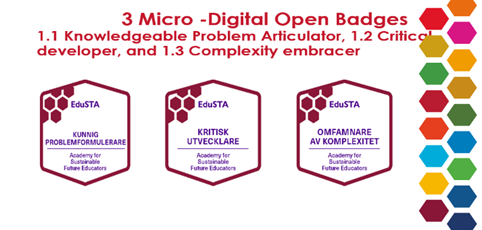
The course content covers various aspects of school development, with a strong emphasis on sustainable development, both as a concept and as a didactic element within vocational education. Alongside mandatory readings, the VET student teachers conducted interviews with school Principals about systematic quality work, which serves as the foundation for their reflections on quality in vocational education.
Despite the low number of 20 badge applications related to only one competence-based digital open badge being integrated into one course instead of allowing VET student teachers to apply for several digital open badges. This decision made the project somewhat vulnerable, with the risk of it being seen as a short-term initiative, quickly checked off and not given lasting value. It was recognized that providing real opportunities to earn digital open badges throughout the university vocational teacher program could greatly benefit future Swedish VET student teachers.
Further reflection on our experiences in the Swedish EduSTA project highlights the critical importance of role models—particularly teachers who possess a deep understanding of how to include all students in sustainability education. Their inclusive practices not only ensure broader participation but also model the very values of equity and engagement that underpin sustainable development.
Students need role models in sustainable education

Swedish activist Greta Thunberg has become a global symbol of the environmental movement, inspiring people of all ages to believe in the possibility of a sustainable future. Scholars have even referred to this phenomenon as “the Greta effect,” highlighting how her activism empowers both the young and the old. But who, in turn, inspired Greta?
As a student, Greta faced challenges related to her autism spectrum diagnosis and at times even stopped attending school. Yet, the turning point in her story came from a classroom experience. During a lesson on the impact of climate change on polar bears, something shifted. This moment—what could be called a critical event—sparked a powerful emotional response in Greta. It became a catalyst, awakening a deep sense of urgency and commitment to act.
From that moment forward, Greta never wavered in her belief in herself or in her capacity to make a difference. She began protesting every Friday outside the Swedish parliament—an act that soon grew into the now-famous "Fridays for Future" movement. Fridays For Future is an international climate movement active in most countries and our website offers information on who we are and what you can do.
What We Can Learn from the Greta Case: Empowering Sustainable and Inclusive Education
The case of Greta Thunberg offers valuable lessons. Despite facing challenges related to her autism spectrum diagnosis, she never doubted her ability to act. This confidence was sparked by a teacher who integrated sustainability into classroom learning—highlighting the profound role educators play in shaping environmental awareness. This underscores a vital message for all teachers, including those in vocational education and training (VET): to encourage all students to develop an “environmental eye” and adopt environmentally responsible behaviours.
But what does it mean to foster an “environmental eye”? Teachers have a responsibility to equip students with the ability to critically read and interpret texts about pollution, toxicity, and unsustainable production. This includes guiding and encouraging students to question environmental narratives and to listen critically to news and public discourse.
Social Sustainability: A Missing Piece in VET?
In higher VET education, sustainability discussions tend to focus primarily on ecological concerns. While this is essential, sustainability rests on three interdependent pillars: ecological, social, and economic. In the Swedish context, we particularly emphasize the intersection between ecological and social sustainability. So, how can both dimensions be promoted within VET?
Social sustainability in VET implies that education should be inclusive and accessible to all students—regardless of their background or ability. Greta’s story serves as a powerful example of this inclusive approach. Her teacher didn’t just provide knowledge about climate change; she created a space where students with disabilities were empowered to see themselves as contributors to sustainability. VET education, with its focus on practical skills, holds unique potential to integrate ecological awareness with occupational competence—effectively blending the practical with the ethical.
Empowering Students Through Inclusive Sustainability
Including students with disabilities in sustainability education is critical. For this to succeed, teacher attitudes play a key role (Uusimaki et al. 2018). Teachers must be persuaded of the value of inclusion and must believe in their own ability to teach sustainability to students with diverse needs. Greta’s teacher exemplified this confidence and commitment. She believed in her capacity to reach all her students—a belief that empowered Greta and, in turn, inspired millions.
Confidence in one’s teaching capability, or self-efficacy, is not innate. According to Bandura (2008) and Seligman et al. (2009), self-efficacy is developed through social learning—via inspiration, persuasion, and successful experience. However, some teachers may lose confidence due to discouraging social or institutional circumstances. That is why it is crucial to cultivate environments that foster optimism, trust, and empowerment—so that teachers feel supported in their mission to include all students in sustainability education (Uusimaki, 2025).
When teachers believe in their own capabilities, they are more likely to encourage similar beliefs in their students (Uusimaki, et al, 2018). This aligns with Giddens (2015)[1], who emphasized the central role of educators in advancing sustainability. Fostering capability involves two key practices: (a) encouraging students’ beliefs in their capability to contribute to a sustainable society and (b) promote the development of these capabilities in creating a sustainable society.
[1] This is in line with Giddens (2015) who argues for urgency for change, regional actions. https://www.theguardian.com/commentisfree/2009/may/23/hay-festival-climate-change?CMP=share_btn_url
Ultimately, students must not only acquire skills—they must also believe in their capacity to make a difference. This belief, their self-efficacy, is the foundation for meaningful participation in climate action and sustainable development (Bandura, 2008).
Concluding reflections
The importance of the EduSTA project has shown how international collaboration, digital innovation, and competence-based learning can reshape education. By empowering educators as leaders in sustainability and making their learning visible, portable, and transferable, EduSTA supports a shift toward a more sustainable, equitable, and interconnected future for education across Europe.
Thing is, here in Sweden, we are not there yet! The use of micro-credentials in Swedish higher education is in its infancy, and important questions remain: How can we ensure quality and consistency in assessment? What infrastructure is required? How do we avoid overwhelming educator while ensuring meaningful recognition for all learners?
Going forward, we suggest two concrete steps:
1. Pilot badge-aligned assessments within existing courses to explore alignment between curriculum goals and badge criteria.
2. Develop professional learning opportunities for educators, focused on assessment literacy and digital credentialing tools.
Acknowledgements:
Sincere thanks to Helena Hellgren for her insightful contributions and invaluable support throughout the EduSTA project.
To Professor Per-Olof Thång, for generously sharing his expertise and deep knowledge of vocational education and training (VET) in Sweden.
And to Professor Monica Reichenberg, for her unwavering support and for consistently reminding us of the essential role that inclusion—particularly of students with disabilities—plays in sustainability education.
References:
Bandura, A. (2008). An agentic perspective on positive psychology. In S. J. Lopez (Ed.), Positive psychology: Exploring the best in people, Vol. 1. Discovering human strengths (pp. 167–196). Praeger Publishers/Greenwood Publishing Group
Haley, A., & Uusimaki, L. (2024). The Purpose of Internationalization – Future Teachers’ Perspectives. Journal of Education for Teaching. Taylor & Francis.
Giddens, A. (2015). The politics of climate change. Policy & Politics, 43(2), 155-162.
Seligman, M. E., Ernst, R. M., Gillham, J., Reivich, K., & Linkins, M. (2009). Positive Education: Positive psychology and classroom interventions. Oxford Review of Education, 35(3), 293–311
Uusimaki, L. (2025 in print). Piloting Competence-Based Digital Open Badges EduSTA project - Sweden. (Editor Wendy Goff) Immersive Learning in Teacher Education: Simulated Environments, Tools, and Practices - IGI Global. Open Access Book (Free Access) - Encyclopedia of Information Science and Technology, Sixth Edition (ISBN: 9781668473665)
Uusimaki, L., & Gustavsson, S. (2023). VET Education for Sustainable Development Sweden. In Ametller, J., Asikainen, E., Gual Oliva., M & Němejc, K. (Eds.) Teacher Training for Education for Sustainable Development - Developing a shared competence framework. ISBN 978-80-213-3324-6
Uusimaki, L. Garvis, S. & Sharma, U. (2018). Swedish early childhood pre-service teachers’ intensions, attitudes, and concerns for engagement in inclusive classrooms. International Journal of Special Needs Education 22 (2) 1-10
